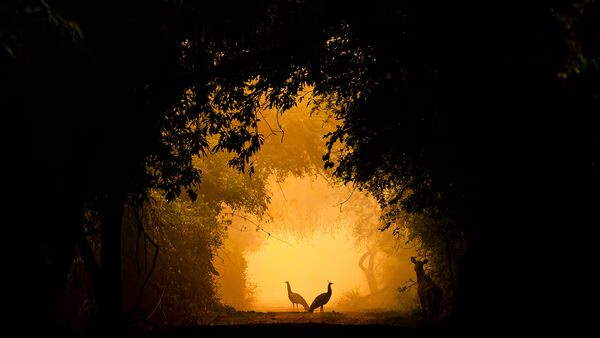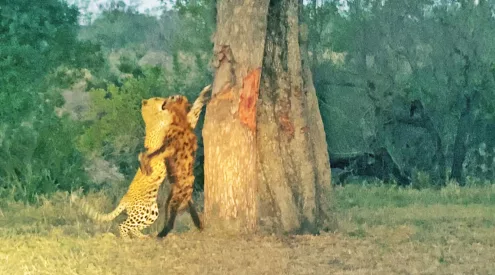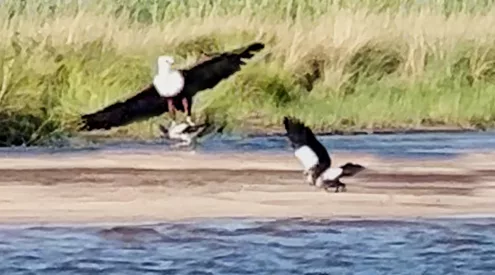Back in the days that I lived in the UK I used to dream of a place in Africa. I had no idea that one day I would have a chance to visit my dream; the Naboisho Conservancy in Kenya. Located on the northern edge of the Maasai Mara National Reserve in Kenya the conservancy is owned by the Maasai people; around 500 landowners that have come together to create a breathtaking wildlife area. From Nairobi I took the ‘African massage express’ (aka a five-hour mini-bus ride over pot-holed roads) although on the return I opted for an Air Kenya flight, just 35 minutes back to Nairobi from a landing strips close to the conservancy.
There are a few lodging options within the conservancy, but my base for this trip was the Encounter Mara Bushcamp, an eco-lodge taking every available step to reduce its footprint on its stunning location. The camp’s common areas overlook a seasonal waterhole and year-round salt lick that attracts a wealth of wildlife. Each of the tents overlook the surrounding vlei regularly visited by a host of species from mongoose to lion.
On arrival I opted not to unpack but jump straight on the first available game drive, with Daniel as my guide; one of the first Maasai warriors to graduate from the conservancy’s own guiding academy. We did not have to go far for our first sighting as just 300 metres in front of my tent we discovered four lion cubs of different ages sleeping off their latest meal under the watchful eye of a stern looking lioness. This group, which later relocated within the camp’s theoretical boundary, are part of a pride of 25 lions, one of several that call the conservancy home, giving Naboisho one of the highest densities of lions anywhere in Africa.
The conservancy is quite simply breathtaking. Huge open plains offering vast vista’s offer up plentiful sightings of topi, ostrich and gazelle whilst in the acacia woodlands we discover Coke’s Hartebeest and Defassa wartbuck, impala, vervet monkeys, olive baboons and elephant. Throughout the conservancy lush foliage highlights the deep gullies of the myriad streams and pools, which provide homes to the diminutive dik-dik, warthog and of course hippo in the larger pools. And then there are rocky outcrops, undulating hills and a scenic treasure around every turn, nature’s story unfolding to give up her secrets like an award-winning novel.
The next day, after a continental breakfast at 06h00, I joined one of the other guests for a morning drive that soon encountered three young male lions polishing off a wildebeest kill, closely observed by jackal, hyena and a host of vultures. A short distance away, a lioness stalked through the scrub as she approached a warthog. Within moments she launched full speed at the now fleeing pig; her charge quick but short lived.
The short rains are commencing here in the Mara resulting in the birth of many young; as the clouds formed we searched amongst the trees next to a river gulley. There, perched among the branches and seeking refuge from the oncoming storm was Africa’s most mystical big cat; a lone female leopard cub. The cooling air and a youthful inquisitiveness in the tourists below prompted this youngster into action as she darted from branch to branch, playing with leaves and swiping at passing birds. She came to rest on an almost imperceptibly small branch, and as the light began to fade her silhouette looked superimposed onto our view with no indication of how this most beautiful of felines was being held up. As we left her to the veil of darkness, studded with the glow of lightning strike she descended the tree, no doubt to meet with her mother, who had probably been metres from us this whole time. The cool temperatures and stormy skies of course had not just affected the behavior of leopards, a similar effect was also occurring to another of Africa’s felines. Eight lions frolicked in the darkness, running and playing; no doubt getting ready for the hunt.
The winds were strong throughout the night, but that is not what woke me at 03h00. It was the sound of munching right behind my head on the other side of the tent’s canvas. A foursome of huge male buffalo that frequent the camp at night had decided that the grass next to my tent was the preferred cuisine. But no need to fret about safety here; each night a Maasai warrior stands guard to ensure your well-being.
Next day and the savanna and acacia woodland were quiet. The winds of last night’s storm were blowing and most animals seemed to have taken shelter, and away from our prying eyes. And so I went to meet the staff of the research program being undertaken within the Conservancy. Through our operational partner, African Impact, ALERT is supporting efforts to discover more about the lions of the Maasai Mara eco system.
Data collected on the lions is being provided to the researchers of the Living with Lions Mara Predator Project that are co-ordinating the region wide effort. Research from Naboisho is combined with data from the Mara North and Olare Orok conservancies and is intended to provide identification of individual lions, to determine home ranges, monitor reproduction and identify long term population trends; essential baseline data for all conservation efforts.
Data is also provided to the Mara Naboisho Lion Project that is seeking to track movements of lions in this area in time and space and identify their population ecology. By achieving this, it will be possible to advise the Maasai people about when and where not to graze their livestock during certain times depending on where the lions are situated and thereby avoid direct confrontations between Maasai, their livestock and lions. It is about achieving the goal where the Maasai people and the wildlife can again live in harmony as they have done before.
This program has a broader reach than just lions. In order to empower the conservation efforts further and measure the progress of the conservancy data is collected on other large predators within the area as well as other wildlife populations that sustain one of the highest densities of lions found anywhere in Africa. Data collected on cheetah populations is provided to the Kenya Wildlife Trust whilst data on elephants is provided to Elephant Voices. In addition the program operates wildlife clubs with students of the nearby primary school, assists a local women’s group by providing skills training, provides logistical support to a nearby clinic and assists in the syllabus of the Koiyaki Guiding School located within the conservancy.
The clouds parted, the sun returned and the wildlife of the conservancy was evident around every bush. Large herds of wildebeest mingled with zebra and new born topi frolicked behind their mothers. A litter of baby jackals came out of their den to observe a passing bat-eared fox. Dwarf mongoose busied themselves scuttling from one place to another, leading our eye to observe a baby dik-dik being born to the world. The explosion of life, for me, was brought to a climax when out of a gulley appeared a lioness holding one cub in her mouth whilst trying to encourage another along by pushing its bottom with her paw. It appears she was trying to move den, but after a short distance she would leave these two cubs and return to the gulley to collect anther two. As she did so the first two would return. The loving mother repeated this process several times before giving up and letting her wayward children return to the den from which they had come. Cute does not come close to describing the scene.
The Encounter Mara lodge operated by our partner African Encounter pledges that for every guest at Encounter Mara, one full day of tuition (of a year’s diploma) is paid for a guide at Koiyaki Guiding School. This pledge will enable local Maasai to be trained as professional guides. With over 85% of current guides not being from the local area, this allows the Maasai to reclaim their homeland and gain employment by sharing their knowledge with others. Further, for every night a guest stays at Encounter Mara one indigenous tree is planted in the surrounding community. This initiative endeavours to assist in the re-forestation of the fragile Maasai ecosystem.


















